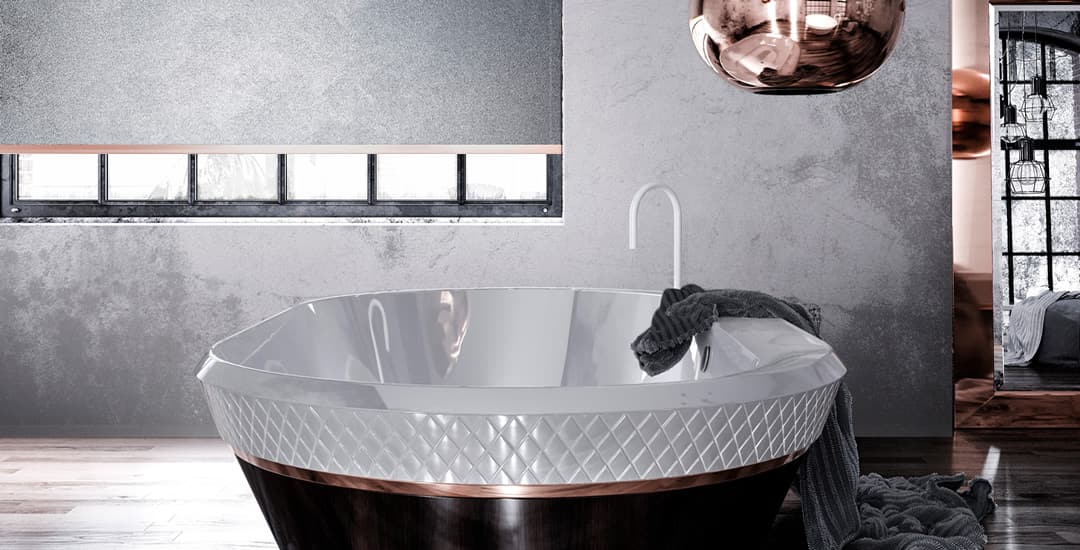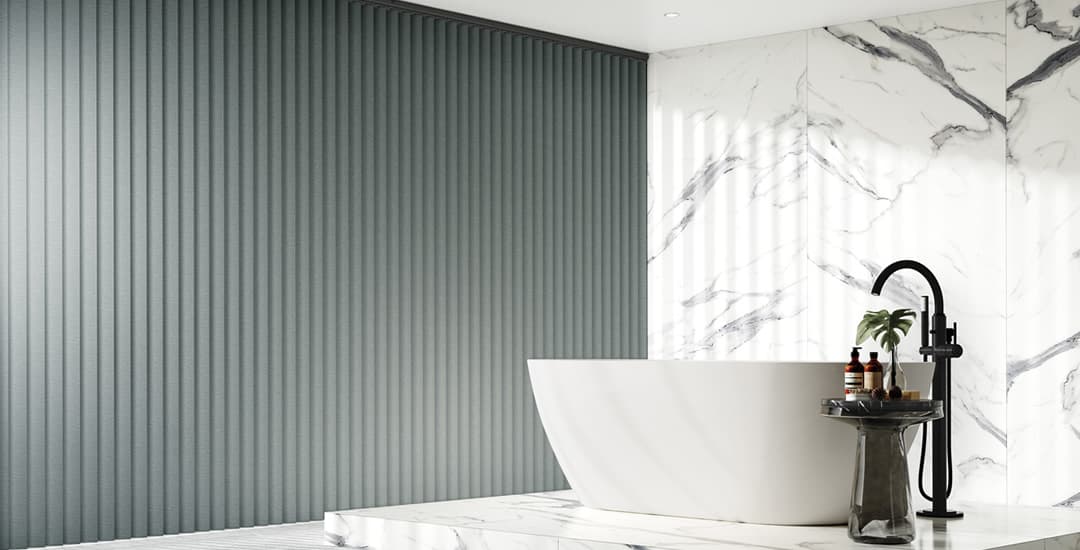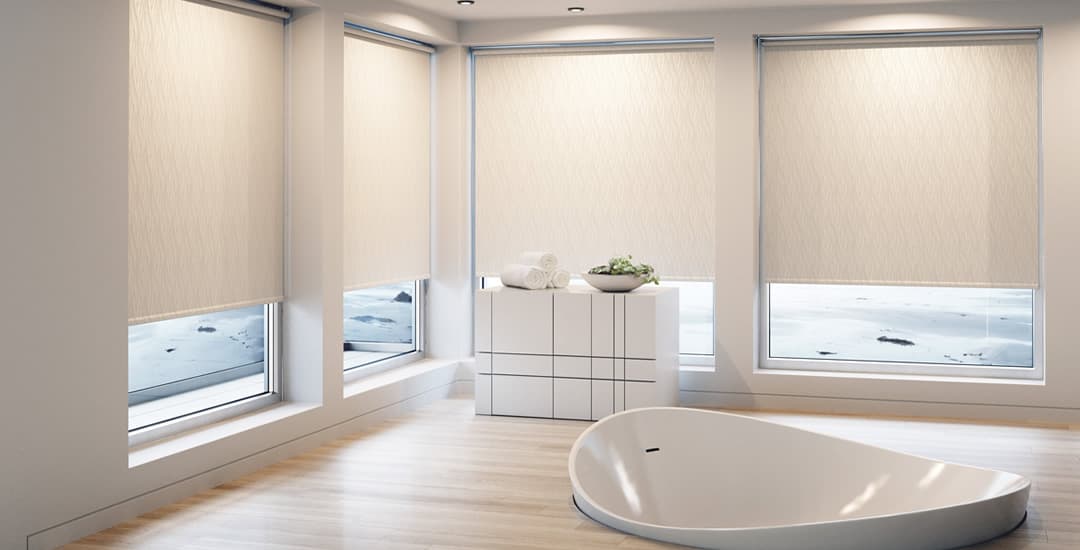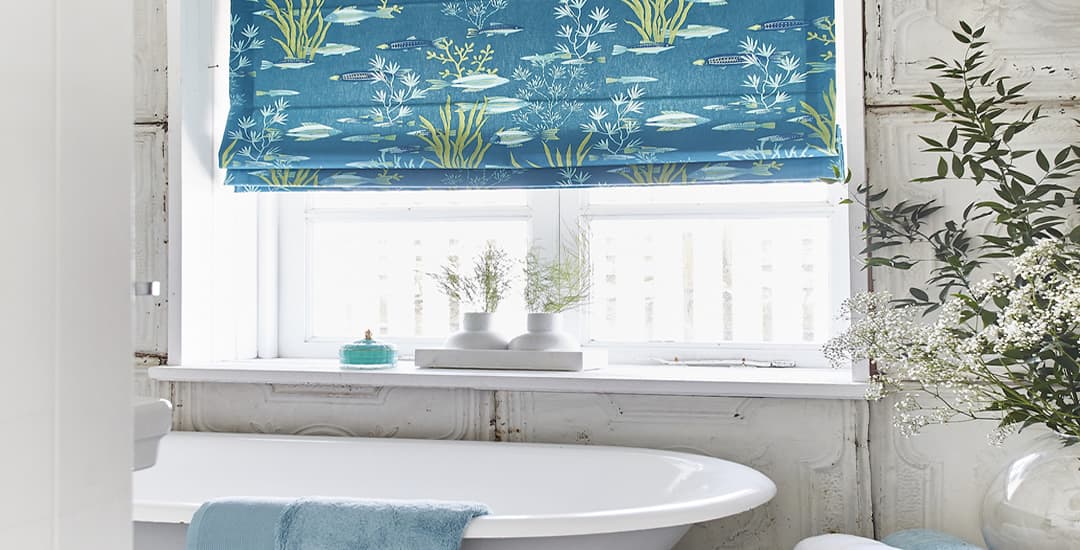
No, not as a rule. Waterproof blinds are a far better choice, and this does still leave a lot of options on the table, both for blinds made of hard materials and those made of materials that very closely emulate normal fabric blinds.
This blog post will talk about why (non-waterproof) fabric blinds aren’t a good choice for most bathrooms, and the potential exceptions to this guidance.
Are fabric blinds ok in bathrooms as a rule?

No, assuming that we’re talking about non-waterproof fabric blinds; these aren’t a sound pick for the majority of bathrooms, due to exposure to steam/humidity, condensation, and the potential for direct contact with water.
Non-waterproof blinds are apt to suffer from damage due to regular or long-term exposure to atmospheric moisture from a steamed up bathroom, and may even begin to grow mildew and smell nasty; as well as possibly showing water marks, and suffering from their colour running, plus damage to the starch layer that gives some fabric blinds their shape and structure.
Direct contact with water by means of splashing from the sink or bath will expedite such issues, and often, blinds won’t ever get a chance to dry out properly if they absorb water or atmospheric moisture.
This means that fabric roller blinds, Roman blinds, and vertical blinds respectively aren’t always a good choice for bathrooms, being as all of these tend to be made from polyester in their non-waterproof variants. Cotton may be present within the fabric mix too, which is no better, and many Roman blinds contain fine threads and detailing for fabrics of a few different types, including silk, linen, and viscose, all of which will suffer from long term or frequent exposure to water and steam.
When are fabric blinds ok in bathrooms?

If your bathroom is high-ceilinged, and/or simply very well-ventilated with all sources of water a long way from the windows and blinds, fabric blinds might be ok. However, this isn’t necessarily the case, because even if your bathroom doesn’t feel to you as if there’s a lot of steam or humidity in the air, it will likely still be present.
Whilst fabric blinds might work out ok in some bathrooms that tick all of the above boxes, they’re few and far between; and if you do take the risk and find out that you got things wrong, this could turn out to be a costly mistake.
Are fabric blinds ok in bathrooms if they definitely won’t get splashed?

Probably not, and certainly not if they’re close to sources of water. Even if you are really careful and know that your blinds won’t get physically splashed, if your blinds are very close to the bath, basin, shower, or other source of water, they’ll also be in close contact with the steam that the hot taps generate and so, that will be absorbed by the blind.
Condensation, humidity, and steam are the main causes of damage to bathroom blinds from moisture, rather than direct splashes.
PVC roller blinds or PVC vertical blinds respectively are waterproof and look more or less identical to their fabric counterparts, and these are a far better choice if you’re keen to choose bathroom blinds made from soft materials.




